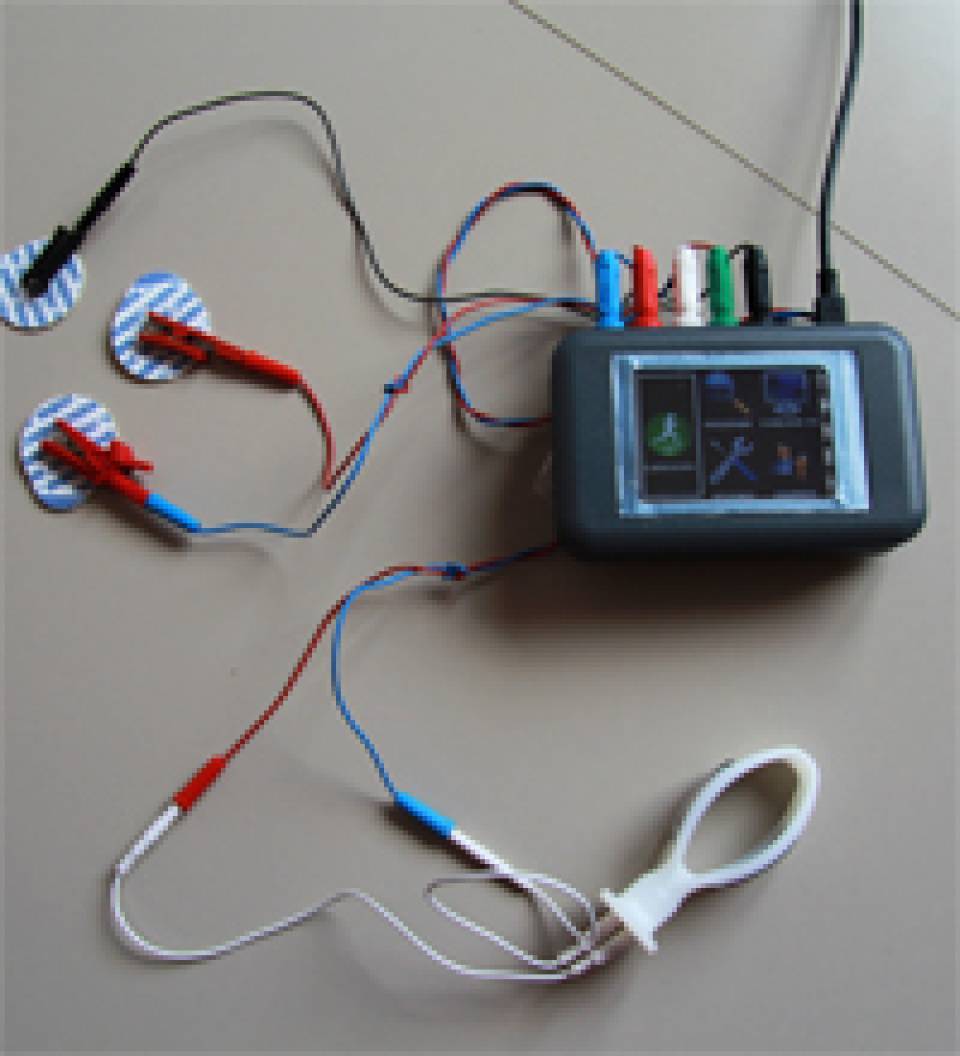Clinical therapies for women include pelvic floor biofeedback devices that record muscle activity through an electrode inserted into the vagina. The display shows the patient the result of the exercise she is performing, so she is aware of the intensity and duration of the biological response to the pressure exerted. To rule out the possibility that the recorded pressure originates in the abdomen, these devices can incorporate electrodes that are placed on the stomach to record abdominal activity. Previously this feature was only incorporated in some units used in clinical practice.
The new device developed by the UPC and the Hospital Clínicde Barcelona is the only portable biofeedback unit that assesses training by monitoring the activity of the muscles of the pelvic floor and abdomen while the patient does the exercises. In addition, it helps therapists to create a personal exercise programme because they can set the number, length and sequence of contractions that they prescribe. The new device records all the activity that the patient performs at home and allows therapists to obtain the information electronically.
Another improvement of the new device is that the program analyzes the patient’s data and provides an initial assessment of the results. The therapistmonitors the patient’s progress through a detailed report on the results of the exercises. In addition, the software can automatically adjust the prescribed exercises according to the results obtained by the patient.
An expert and multidisciplinary team
Theportable device and the clinical management program with a statistical algorithm weredeveloped by the researchers Joan José Ramos and Miguel Àngel Mañanas of the Biomedical Engineering Research Centre (CREB) of the UPC.
The prototype was the result of a multidisciplinary project involving Dr. Montserrat Espuña, head of the Pelvic Floor Unit of the Clinical Institute of Obstetrics and Neonatology (ICGON) of the Hospital Clínic de Barcelona, and Amelia Perez, anexpert nurse inurinary incontinence working at the Unit, which has 30 years of experience in treating this problem. Dr. Espuña is chair of the Pelvic Floor Section of the Spanish Society of Obstetrics and Gynaecology and chair of the Scientific Committee of the International Continence Society (ICS).
A patented prototype
The new device has already been tested by a group of patients and a group of volunteers in a pre-clinical testing phase, with very satisfactory results. The prototype has been patented, and several international companies have shown interest in the device, which substantially improves home treatment with medical supervision of a problem that is becoming increasingly common: between 2005 and 2011 the incidence of urinary incontinence increased by 5.86%.
Therapy based on pelvic floor exercises is widespread because it is recommended for use as the initial treatment in most cases of urinary incontinence. It is risk-free and shows a high success rate. Cases of mild urinary incontinence are likely to be cured and most users see a significant improvement in symptoms and a decrease in the effect of incontinence on their quality of life. The exercises are also recommended as a preventive measure during pregnancy and after childbirth.

